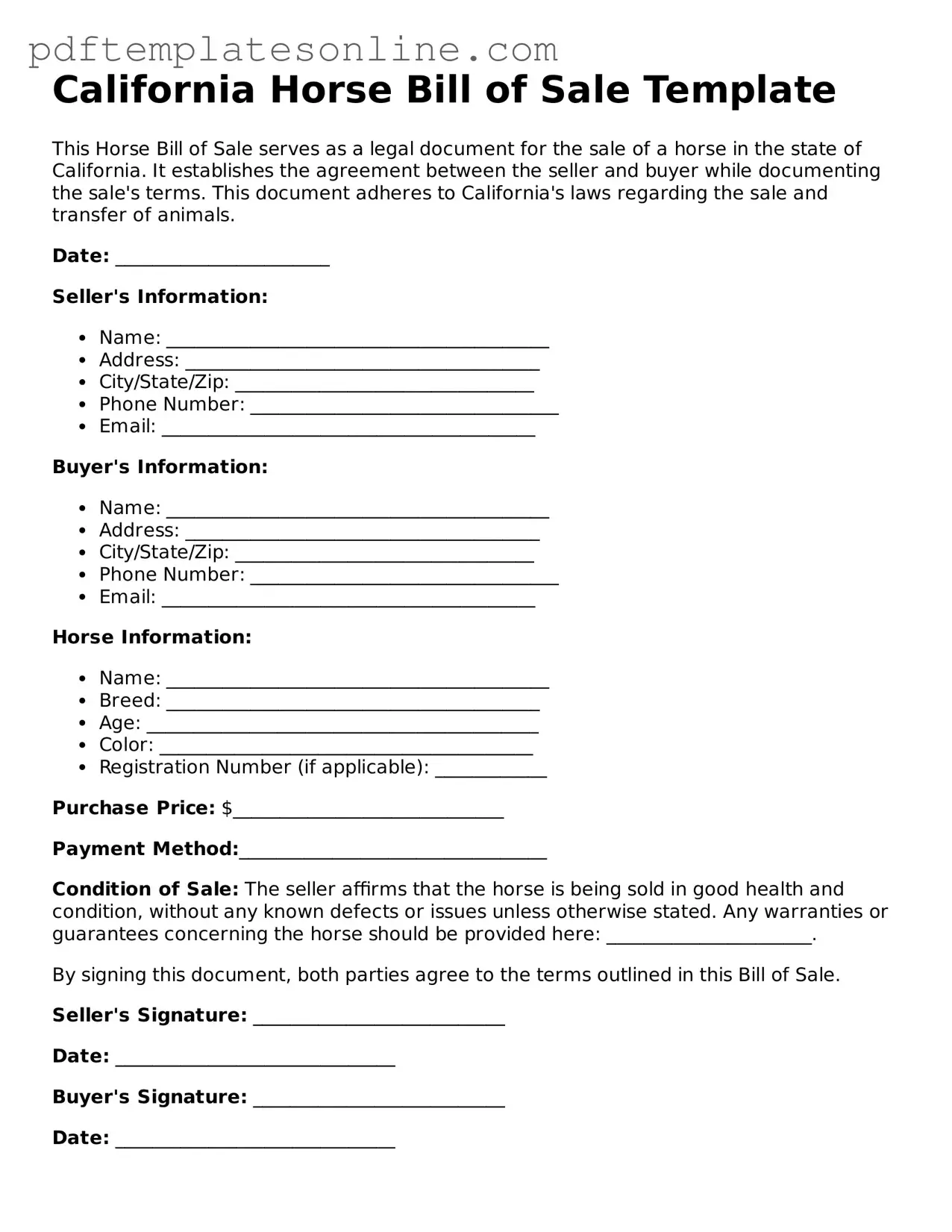When filling out the California Horse Bill of Sale form, it’s easy to overlook details that can lead to complications down the line. One common mistake is failing to provide accurate identification information for both the seller and the buyer. The form requires full names, addresses, and contact information. Omitting even one detail can create confusion and hinder the transfer of ownership.
Another frequent error involves the description of the horse itself. Buyers and sellers sometimes neglect to include essential details such as the horse's breed, age, color, and any distinguishing marks. This lack of specificity can lead to disputes regarding the horse's identity, especially if the horse is sold multiple times.
In addition, people often forget to include the purchase price. While it may seem obvious, leaving this field blank can raise questions about the legitimacy of the sale. It’s important to document the agreed-upon amount to avoid potential misunderstandings in the future.
Additionally, many individuals fail to sign the document. Both parties must sign the bill of sale for it to be legally binding. Without signatures, the transaction may be deemed incomplete, leaving both parties vulnerable to legal challenges.
Some individuals also overlook the importance of including any conditions of the sale. If there are specific terms, such as health guarantees or payment plans, these should be clearly stated on the form. Failing to do so can lead to disputes later on.
Another mistake involves not keeping a copy of the completed bill of sale. After signing, it’s crucial for both the buyer and seller to retain a copy for their records. This document serves as proof of the transaction and can be invaluable if any issues arise later.
People sometimes neglect to date the form. A date provides context for the transaction, which can be important if any disputes arise. Including the date helps clarify when ownership officially transferred.
Moreover, individuals may not realize that the bill of sale should be notarized in some cases. While not always required, having a notary public witness the signatures can add an extra layer of protection and authenticity to the document.
Finally, many forget to check for errors after filling out the form. Simple typos or miswritten information can lead to significant issues. Taking the time to review the completed bill of sale can prevent unnecessary complications and ensure a smooth transfer of ownership.
